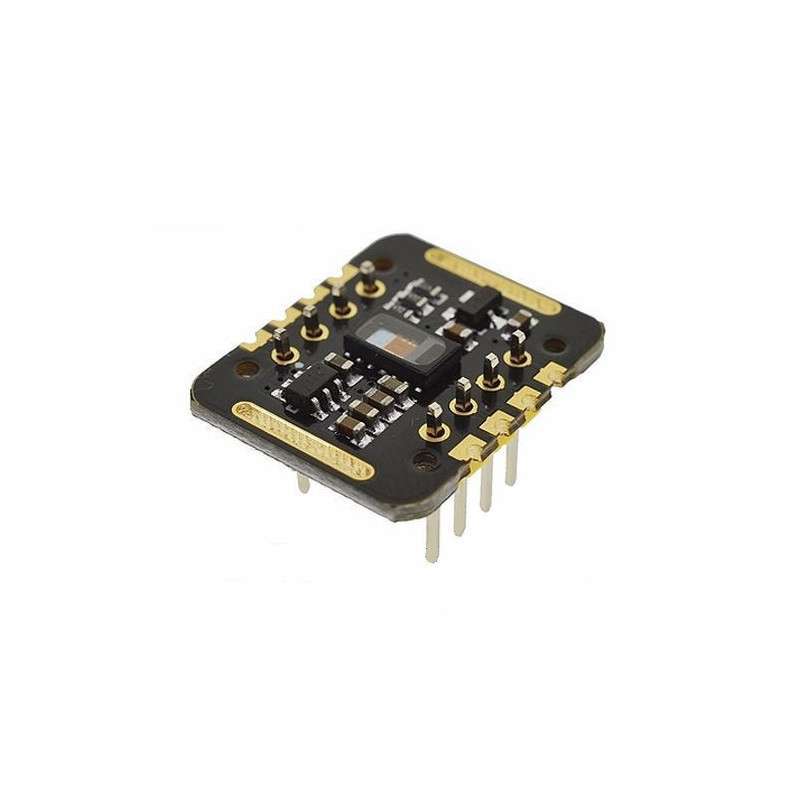




Security policy

Delivery policy
Pulse oximetry is a non-invasive method that allows measuring the percentage of oxygen saturation of hemoglobin (SaO2) in a patient's blood using a photoelectric circuit. For this, a pulse oximeter is used, which is a device that integrates light emitters and the sensor that measures the amount of light reflected by the patient's finger. The light detected by the sensor varies according to the concentration of oxygen in the blood, oxygenated blood absorbs a greater amount of infrared light, while poorly oxygenated blood absorbs more red light.
The MAX30102 is a device that integrates a pulse oximeter and a heart rate monitor, it is the evolution of the MAX30100 sensor manufactured by Maxim Integrated. It has two LEDs: a red LED (660nm) and an infrared LED (920nm), a photodetector, specialized optics, an ambient light filter between 50 and 60Hz, and a 16-bit delta sigma ADC converter with up to 1000 samples per second. It also has an internal temperature sensor to compensate for the effects of temperature on the measurement.
The MAX30102 requires two voltages to operate: 1.8V to power the circuitry and a voltage between 3.3v and 5v for the red and infrared LEDs. This module includes both on-board voltage regulators so only a 5V supply is needed for power. Its current consumption is minimal, making it ideal for portable applications. It can be used in medical monitoring equipment, fitness assistants and wearables in general (smartwatch).
TECHNICAL SPECIFICATIONS:
Operating Voltage: 5V DC
On-board 3.3V and 1.8V voltage regulator
Communication protocol: I2C (compatible with 5v and 3.3v)
Sensor: MAX30102 (Maxim Integrated)
660nm red LED
880nm infrared LED
Light filter between 50 and 60Hz
Up to 16-bit delta sigma ADC
Working temperature: -40°C to +85°C
Dimensions: 14mm x 17mm
CONNECTIONS:
VIN: 5V DC
GND: 0V
SCL: I2C CLOCK
SDA: I2C DATA
INT: Interrupt, active to low state
Data sheet